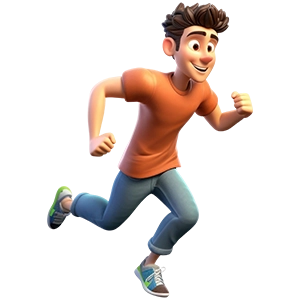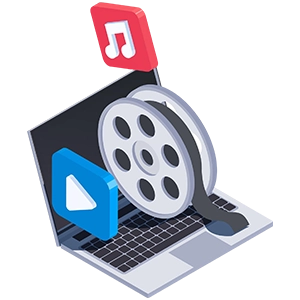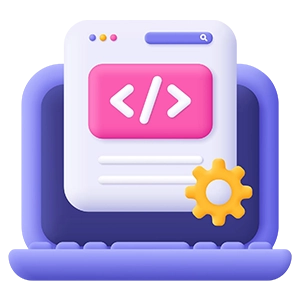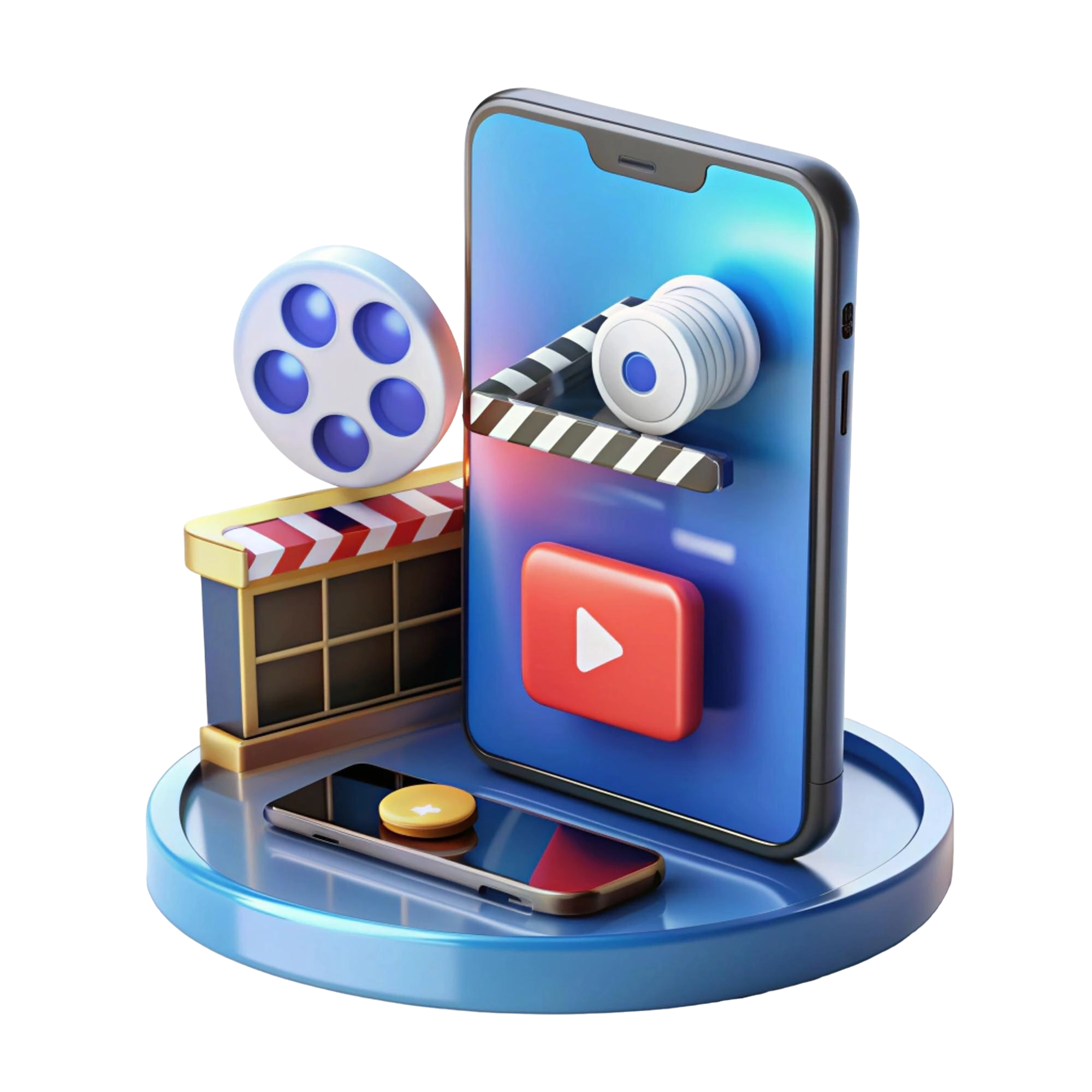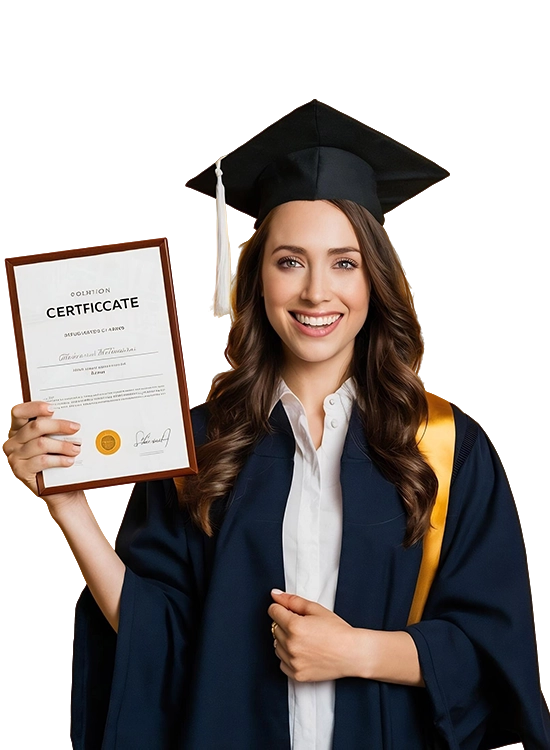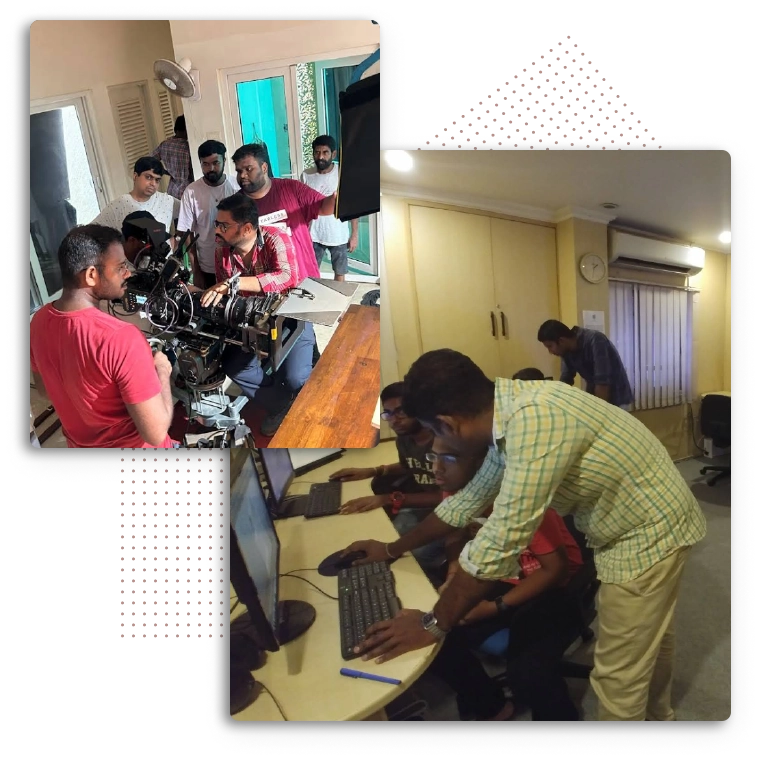No products in the cart.
Return To Shop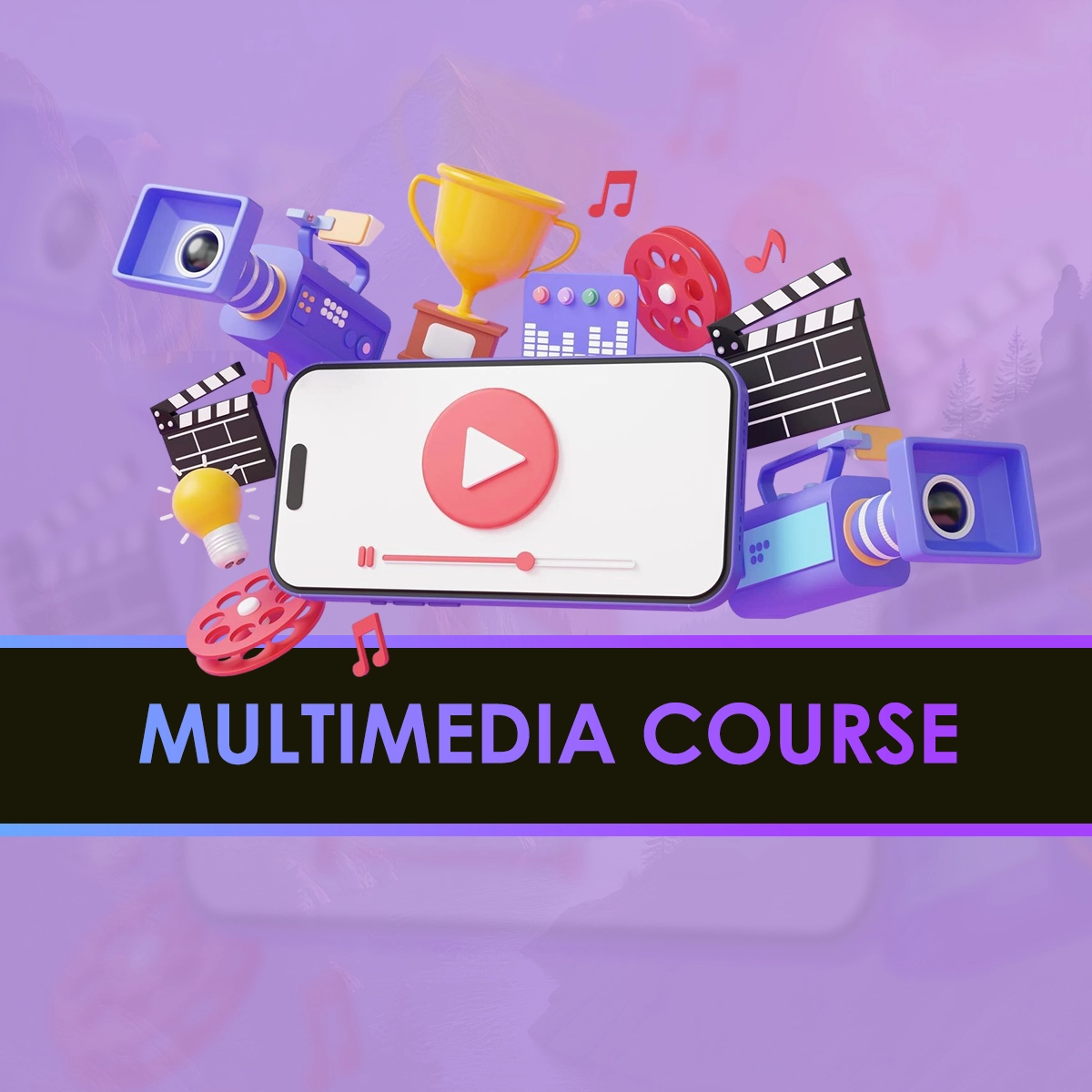

Home » MULTIMEDIA COURSE
Best Multimedia Course in Chennai – Learn from Industry Experts & Get Certified
Master multimedia to create engaging visuals, animations, interactive content, and professional designs across platforms. Learn graphic design, video editing, 2D/3D animation, web design, and motion graphics ideal for beginners building a future-ready portfolio for careers in design, media, and digital communication.

Top Media Instructors

19+ Years
of Expertise
of Expertise
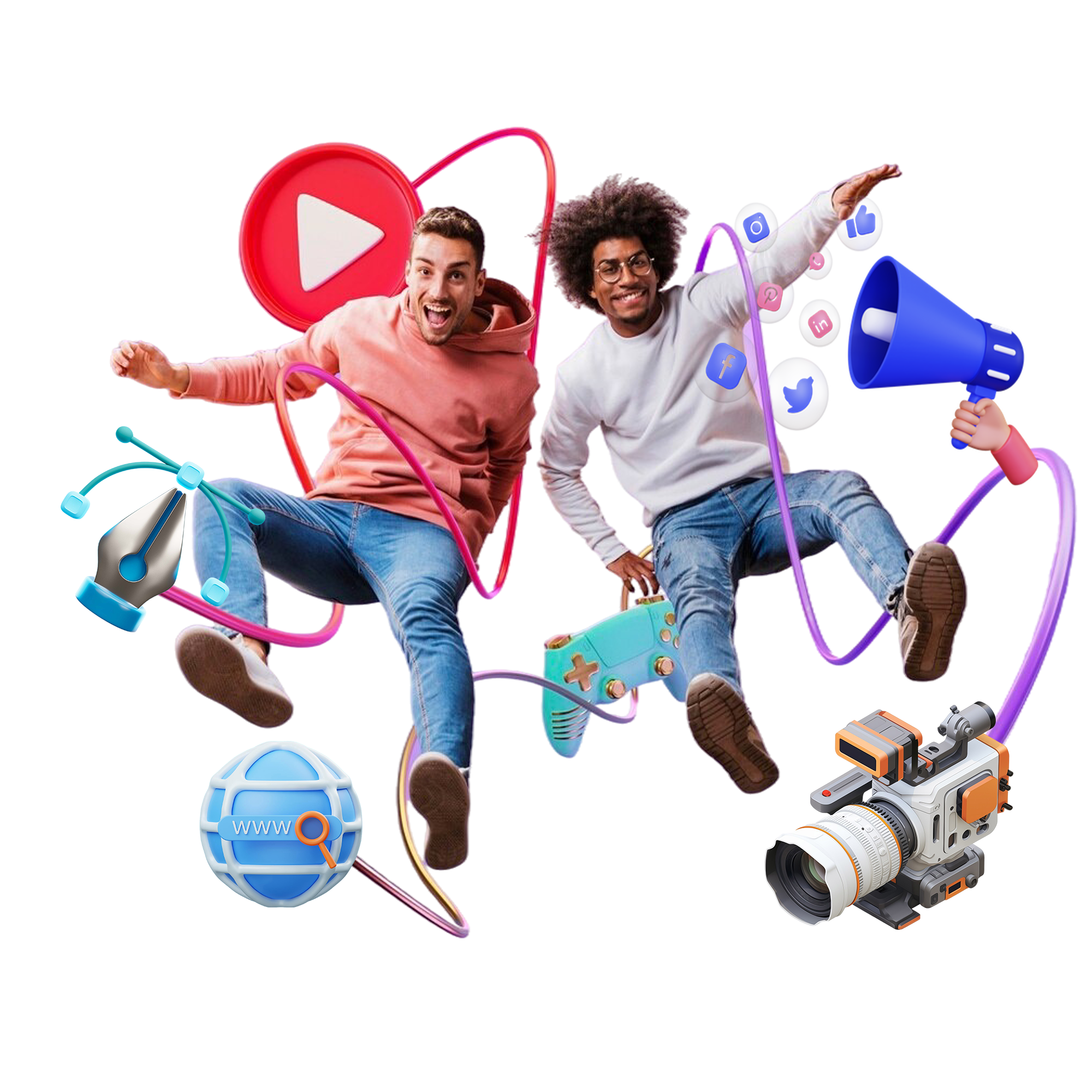
K
STUDENTS ENROLLED
K
CLASS COMPLETED
%
JOB PLACEMENT
+
YEARS OF EXPERTISE
2008
TRUSTED SINCE



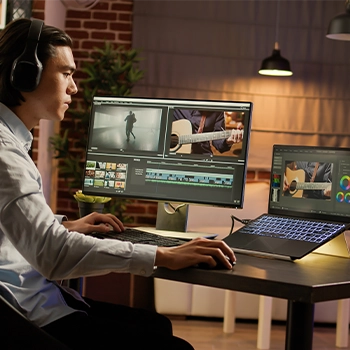
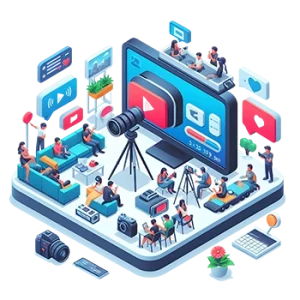
Why Choose Our Multimedia Course?
Learn from Industry Experts, Master Leading Multimedia Tools, and Create a Versatile Portfolio with Hands-On Training. Our Multimedia Course Offers Real-World Projects, Expert Mentorship, and Placement Support, Equipping You with the Skills Needed to Excel in Graphic Design, Animation, Video Editing, Web Design, and Digital Media. Transform Your Creativity with the Power of Multimedia and Elevate Your Career to New Heights in the Creative and Technology-Driven Industries.
- Expert-Led Training
- Real-World Projects
- Flexible Learning at Your Own Pace
- Access to Industry Standard Tools
- Job Placement Assistance
- One-on-One Personalized Learning
- Official Course Certificate
- Affordable Fees at EMI
- 5000+ Hiring Companies
- Scholarship Facility
Why Choose Multimedia Courses At VFX
Our Expert-Led Multimedia Courses Blend Industry-Standard Tools, Hands-On Projects, and Real-World Design Training. With a Comprehensive Curriculum and Professional Mentorship, You’ll Master Graphic Design, Video Editing, 2D/3D Animation, Web Design, and Motion Graphics Building a Standout Portfolio and Gaining the Skills to Launch a Career in Media, Design, and Digital Communication.
Industry-Relevant Curriculum
Master Multimedia Tools and Techniques using Adobe Creative Suite, Blender, and Audio/Video Editing Software in our Comprehensive Multimedia Program.
Expert Faculty with Industry Experience
Gain Insights and Mentorship from Industry Veterans who’ve worked on Multimedia Projects across Advertising, Entertainment, and Digital Media.
Hands-On Projects & Live Assignments
Build a Professional Portfolio with Graphic Designs, Animations, Interactive Media, and Audio-Visual Projects through Real-World Assignments.
Career Support & Freelancing
Launch Your Multimedia Career with Personalized Guidance, Hands-On Experience, and Portfolio Reviews to Prepare for Freelancing or Full-Time Roles.
Schedule a Callback
Multimedia Course in Chennai
Are you passionate about multimedia and eager to transform your creative ideas into engaging visuals through graphic design and video editing?
Transform your ideas into visuals with VFX’s 19 years of expertise. Get personalized tra.ining in design, animation, and video editing with expert guidance.



What You'll Master in Our Multimedia Program
Our Multimedia Course offers a well-rounded curriculum that covers
Graphic Design
Master the principles of graphic design to create visually compelling layouts, typography, and illustrations.
Fundamentals of Animation
Master the core principles of animation, forming the foundation for all your future work in the field.
3D Modeling
Develop expertise in creating 3D characters, environments, and assets that bring your ideas to life.
Motion Graphics
Acquire the skills to craft dynamic motion graphics that enhance your animation projects and storytelling.
Rendering & Compositing
Learn the art of rendering high-quality 3D animations and compositing them into a polished, final product.
Audio Editing
Learn how to record, edit, and mix audio for your multimedia projects, enhancing your animations and videos with high-quality sound.
Web Design
Learn how to design responsive, user-friendly websites that align with modern design trends and functionality.
Lighting & Texturing
Discover how to light 3D scenes and apply textures to achieve realistic depth and atmosphere.
Visual Effects
Learn industry-standard tools and techniques to create stunning visual effects that elevate your 3D scenes.
Character Animation
Learn character animation techniques, focusing on realistic movement, expressions, and actions.
Video Editing
learning how to edit footage, apply effects, and create professional video content.
Project Development
Apply your skills in real-world projects, from conceptualization to execution, preparing you for professional work in the multimedia industry.
to start your journey with our comprehensive multimedia courses and turn your creative ideas into digital success
Facts
Why Learn Multimedia?
Learning multimedia is crucial in today’s digital age as it equips you with a diverse skill set encompassing graphic design, video editing, animation, Visual Effects and web design. This versatility allows you to create compelling content across various platforms, enhancing your communication and creative problem-solving abilities.
With the increasing demand for multimedia professionals in industries like advertising, entertainment, and technology, mastering these skills opens doors to numerous career opportunities and ensures you remain relevant in the ever-evolving digital landscape. Essentially, multimedia education empowers you to adapt, innovate, and thrive in a visually driven world.
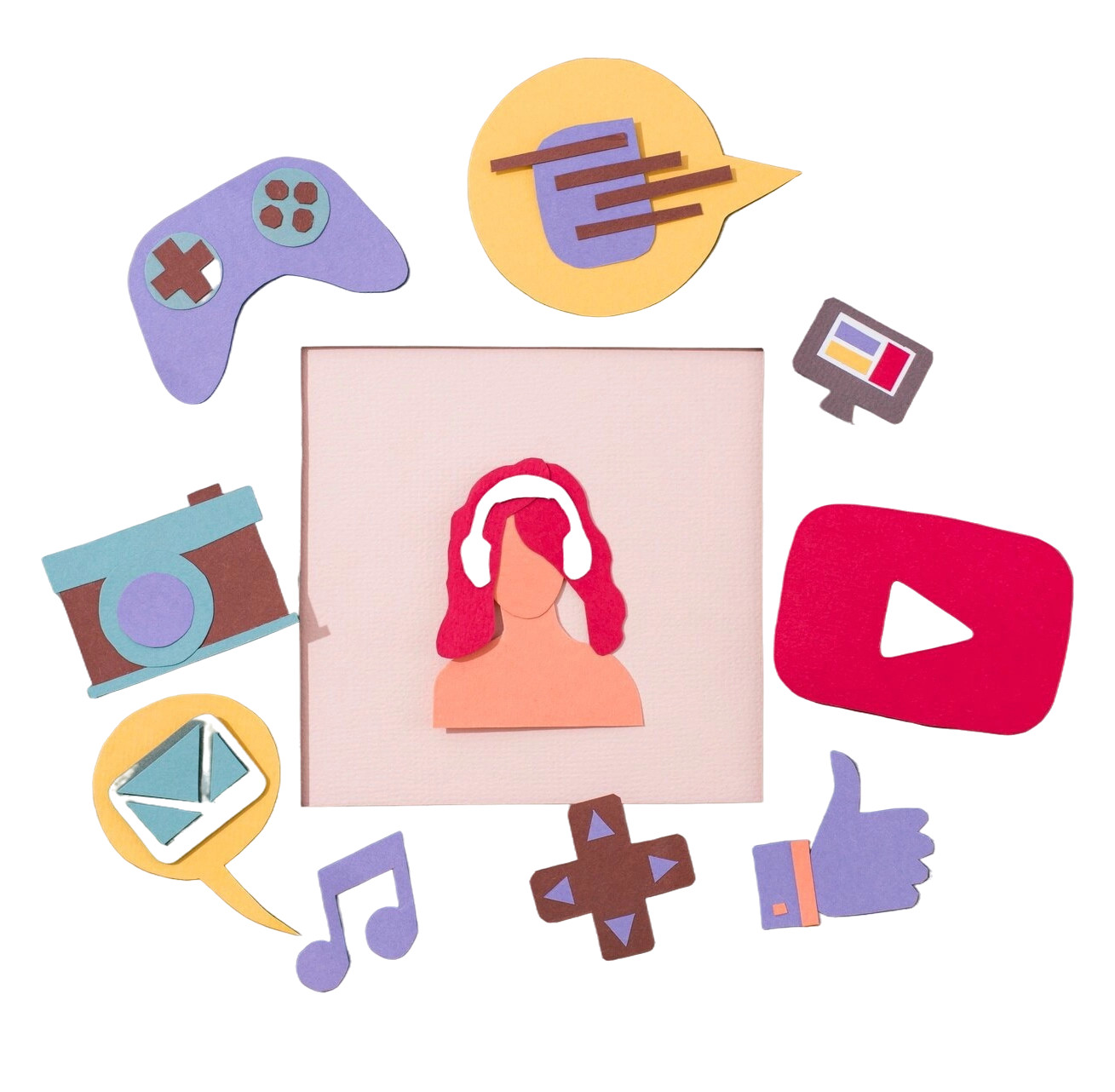
Multimedia Course Syllabus with Real World Projects & Tools
Introduction To Multimedia & Visual Communication
- Explore Multimedia Elements: Text, Images, Audio, Video, And Animation
- Understand Applications In Advertising, Film, Gaming, And Digital Platforms
- Study Integration Of Multimedia In UI/UX, AR/VR, And Interactive Media
- Learn Storytelling Techniques To Engage Diverse Audiences
- AI Focus: Automated Design Suggestions, Content Generation
Design Principles & Typography
- Learn The Principles Of Balance, Contrast, Rhythm, Alignment, And Hierarchy
- Study Typefaces, Readability, Digital Vs. Print Typography
- Practice Designing Posters, Brand Guidelines, And Web Layouts With Typography
- Apply Grids And Alignment For Professional Layouts
- AI Focus: AI-Powered Font Pairing And Style Generation
Raster Graphics – Adobe Photoshop
- Master Image Editing, Retouching, And Creative Photo Manipulation
- Work With Layers, Layer Masks, Filters, And Blending Modes
- Learn Advanced Selection, Compositing, And Correction Techniques
- Explore Digital Painting And Concept Art Basics
- AI Focus: Photoshop Generative Fill, Topaz AI For Smart Image Enhancement
Vector Graphics – Adobe Illustrator
- Create Scalable Illustrations, Icons, Infographics, And Branding Assets
- Master The Pen Tool, Paths, Gradients, Shapes, And Brushes
- Design Professional Logos, Packaging, And Social Media Graphics
- Learn Vector-To-Print Workflows For Branding Campaigns
- AI Focus: AI-Assisted Tracing, Auto Pattern Generation, Instant Logo Mockups
Layout Design For Print & Digital
- Introduction to Wireframing, Prototyping, and Interactive Mockups.
- Design Intuitive Interfaces for Web and Mobile Applications.
- Explore User Research, Personas, and Journey Mapping.
- Conduct Usability Tests and Feedback Driven Improvements.
- Ai Focus: Ai-based Accessibility Checks, Automated UX Optimization.
Audio Fundamentals & Voice Recording
- Learn Basics of Sound Waves, Recording Techniques, and Audio Formats.
- Record High-quality Voiceovers and Dialogues with Clarity.
- Apply Noise Reduction, Equalization, Compression, and Mastering.
- Work with Multi-track Audio for Podcasts and Media Projects.
- Ai Focus: Ai-based Noise Cleanup and Auto-enhance
Sound Design & Music Production
- Understand Sound Layering, Beats, and Background Scoring.
- Create Original Sound Effects for Video, Animation, and Games.
- Use Midi Instruments, Synths, and Samples for Music Production.
- Mix and Master Audio Tracks for Professional Output.
- Ai Focus: Ai-powered Music Generation and Mastering
Video Production Essentials
- Learn Scripting, Shot Division, and Storyboarding for Projects.
- Understand Camera Operations: Angles, Movements, and Framing.
- Explore Lighting Setups for Indoor and Outdoor Shoots.
- Plan Production Workflows From Concept to Final Capture.
- Ai Focus: Ai-assisted Scriptwriting and Storyboard Generation
Lighting & Cinematography Basics
- Study Three-point Lighting, Natural Vs. Studio Lighting Setups.
- Understand Exposure, Aperture, Iso, and Shutter Speed.
- Explore Cinematic Framing and Composition.
- Practice Visual Storytelling Through Lighting Moods.
- Ai Focus: Ai Lighting Simulations, Auto Corrections, and Exposure Balancing.
OBS Studio For Live Capture & Streaming
- Set up OBS for Live Lectures, Events, and Gameplay Capture.
- Add Overlays, Transitions, and Lower-thirds for Professional Streams.
- Configure Multi-source Recordings (camera + Screen + Audio).
- Explore Broadcasting for YouTube, Twitch, and Webinars.
- Ai Focus: Ai-powered Background Removal and Live Subtitle Generation.
Audio-Visual Project Workflow & Editing Basics
- Learn Importing, Syncing, and Organizing Audio-video Files.
- Perform Rough Cuts and Simple Timeline Editing.
- Add Basic Transitions, Titles, and Effects.
- Explore NLE (Non-Linear Editing) Workflows.
- Ai Focus: AI-based Auto-cutting, Scene Detection, and Smart Editing
Video Editing Techniques
- Master Cutting, Trimming, and Timeline Editing.
- Sync Audio and Video with Multi-cam Footage.
- Apply Transitions, Overlays, and Effects.
- Export Projects for Web, Film, and Social Platforms.
- Ai Focus: AI Auto-edit Highlights, Auto-transcription, and Captions.
Motion Graphics & Compositing
- Learn Layer Based Animation and Keyframing.
- Create Motion Titles, Infographics, and Explainer Videos.
- Integrate Graphics Into Live Action Footage.
- Explore Tracking, Masking, and Compositing Workflows.
- Ai Focus: AI Assisted Keyframing and Motion Tracking.
Typography In Motion
- Design Animated Text Synced with Music or Voiceovers.
- Apply Expressive Typography for Ads and Storytelling.
- Explore Timing, Rhythm, and Typography Hierarchy.
- Create Transitions Between Text-based Scenes.
- AI Focus: AI Animation Presets for Text and Dynamic Effects.
Visual Storytelling Through Editing
- Understand the Psychology of Editing and Emotional Flow.
- Use Cuts, Transitions, and Pacing to Drive Narrative.
- Learn Continuity, Rhythm, and Montage Principles.
- Craft Scenes for Maximum Audience Engagement.
- AI Focus: AI Scene Detection and Auto-editing for Story Flow.
Color Correction Basics – DaVinci Resolve
- Balance Exposure, Contrast, and Saturation.
- Correct White Balance and Adjust Tonal Range.
- Differentiate Primary Vs. Secondary Corrections.
- Use Scopes (waveform, Vector scope) for Accuracy.
- AI Focus: Ai Auto-matching and Color Balance Tools.
Color Grading Styles & LUTs
- Apply LUTS for Film Like Styles and Mood Creation.
- Explore Cinematic, Vintage, and Stylized Looks.
- Create Custom Grading Presets for Branding.
- Learn Color Harmony in Visual Storytelling.
- AI Focus: AI Style Transfer for Cinematic Looks.
Principles Of 2D Animation
- Understand Timing, Squash & Stretch, and Anticipation.
- Explore Basic Animation Cycles: Walk, Run, Jump.
- Learn Staging, Arcs, and Exaggeration for Appeal.
- Animate Characters and Environments.
- AI Focus: AI In-Betweening for Smoother Animations.
Frame-By-Frame & Rig-Based Animation
- Compare Hand-drawn Vs. Rig Based Animation Workflows.
- Animate Lip Sync and Facial Expressions.
- Explore Puppetry and Bone Based Rigs.
- Practice Multi Scene Animations with Layers.
- AI Focus: Ai Auto-lip-sync and Auto Rigging.
Character Design & Rigging For Animation
- Learn Anatomy, Proportions, and Character Stylization.
- Create Unique Personalities Through Design.
- Build Rigs for Movement and Poses.
- Develop Character Sheets and Turnaround Models.
- Ai Focus: AI Concept Art and Variations
Storyboarding & Animatics For Production
- Create Shot Sequences and Narrative Structures.
- Develop Animatics for Pre-visualization.
- Learn Pacing, Camera Angles, and Continuity.
- Collaborate on Storytelling Through Visuals.
- AI Focus: AI Storyboard Generation and Auto-thumbnails.
Advanced Color Grading Techniques
- Explore Node Based Grading with Advanced Curves.
- Match Across Multiple Cameras and Lighting Setups.
- Use HSL Tools for Precision Adjustments.
- Develop Cinematic Color Harmonies.
- AI Focus: Ai Skin Tone Matching and HDR Grading.
Cinematic Look Development & Film Emulation
- Recreate Hollywood and Vintage Film Aesthetics.
- Apply LUTS for Film Emulation and Genre Moods.
- Build Narrative Driven Color Palettes.
- Explore Creative Looks for Ads and Music Videos.
- AI Focus: AI Look Transfer From Film References.
3D Modeling & Animation – Blender & Cinema 4D
- Explore Multimedia Elements: Text, Images, Audio, Video, and Animation.
- Understand Applications in Advertising, Film, Gaming, and Digital Platforms.
- Study Integration of Multimedia in UI/UX, AR/VR, and Interactive Media.
- Learn Storytelling Techniques to Engage Diverse Audiences.
- AI Focus: Automated Design Suggestions, Content Generation
Digital Sculpting – ZBrushCoreMini / SculptGL
- Sculpt Organic Models: Characters, Creatures, Props.
- Apply Details: Skin, Fabric, Hair, and Accessories.
- Learn Retopology for Optimized Models.
- Export Assets to Animation/game Engines.
- AI Focus: AI Retopology and Texture Generation.
VFX & Compositing – Natron
- Perform Green Screen Keying and Chroma Removal.
- Use Motion Tracking for Integrating 3d Elements.
- Add Explosions, Particles, and Atmospheric Effects.
- Composite 2D/3D Layers for Final Shots.
- AI Focus: AI Object Removal and Background Replacement.
Game Design Foundations – Unity / Unreal / Godot
- Learn Fundamentals of Gameplay Mechanics.
- Create Interactive Levels and Environments.
- Implement Character Controls and Animations.
- Explore AR/VR Integration for Immersive Media.
- AI Focus: AI Procedural Environment and NPC Generation.
Career Development & Professional Showreel Creation
- Build a Career Roadmap in Multimedia Industries.
- Learn Self-branding, Freelancing, and Networking.
- Develop Resumes and Job-ready Portfolios.
- Curate Best Works Into Demo Reels.
- AI Focus: AI Resume Builders and Portfolio Analyzers.
Portfolio Development & Final Capstone Project
- Create a Professional Portfolio on Behance/artstation.
- Select a Final Project (short Film, Game Prototype, Vfx Scene).
- Collaborate in Teams to Simulate Industry Work.
- Present Projects with Storytelling and Design Rationale.
- AI Focus: AI Feedback Systems for Refining Projects.
Experience our Infrastructure
Studio Style Learning with VFX
At VFX, Characters Don’t Just Move — They Come Alive
Batch Sizes Limited to Ensure 1 On 1 Attention
Instructors with 10+ Years of Experience in the Animation Industry
24/7 Student Support With Mentoring and Career Advice
Updated Syllabus Aligned With 2025 Industry Trends
Learn Multimedia the Way It’s Done in the Real World. Every module mirrors professional studio workflows from graphic design, animation, and video editing to motion graphics and audio design. You’ll sharpen your skills with hands-on projects, live feedback sessions, peer collaboration, and expert mentorship. Master the entire multimedia production process from concept to completion and build a portfolio that gets noticed.
Learn from the Best
Expert Instructors & Flexible Learning at Your Fingertips
Meet Our Expert Instructors:
Learn from seasoned professionals with real-world experience in branding, digital design, and visual storytelling. Our instructors bring hands-on insights and mentorship to help you grow creatively and professionally across diverse multimedia platforms.
Flexible Learning Options:
Weekday Batches
Morning and evening sessions.
Online Classes
Live instructor-led sessions.
Weekend Batches
For working professionals.
Offline Classes
At our Chennai campus.
OUR MULTIMEDIA COURSE BENEFITS & OUTCOMES
At VFX, we offer personalized one-to-one training, ensuring that every student receives individualized attention and customized guidance to maximize their learning experience. With over 19 years of industry experience, our institute brings a wealth of knowledge and real-world expertise that is crucial for building a successful career in multimedia.
Our industry-relevant curriculum keeps students up to date with the latest trends and technologies, equipping them with the skills needed in today’s competitive job market. With experienced trainers who have worked on major projects in animation, VFX, web design, and video editing, students benefit from top-tier instruction. Additionally, our hands-on approach gives students the opportunity to work on real-world projects, building a professional portfolio that makes them job-ready.
With state-of-the-art infrastructure and access to the latest industry-standard software and equipment, VFX ensures that students are prepared for the ever-evolving world of multimedia.
Multimedia Course Fees Structure
-
Expert Led Training
-
Real World Projects
-
One-on-One Personalized Learning
-
Learn Professional 3D and VFX Tools like Substance Painter, ZBrush, Houdini, Adobe After Effects, DaVinci Resolve, Unreal Engine, and Marvelous Designer. Master Advanced Techniques in Animation, Editing, Motion Graphics, and 3D Content Creation for Film, TV, and Digital Media.
-
Course Duration- 10 Months
-
Weekday Batches: Monday, Wednesday, Friday (10:00 AM - 7:00 PM)
-
Weekend Batches: Saturday, Sunday (10:00 AM - 1:00 PM)
OUR RECRUITERS
Secure your Future with Our Recruiters
Your dream job is closer than you think — We make you Equipped enough to get you there sooner.
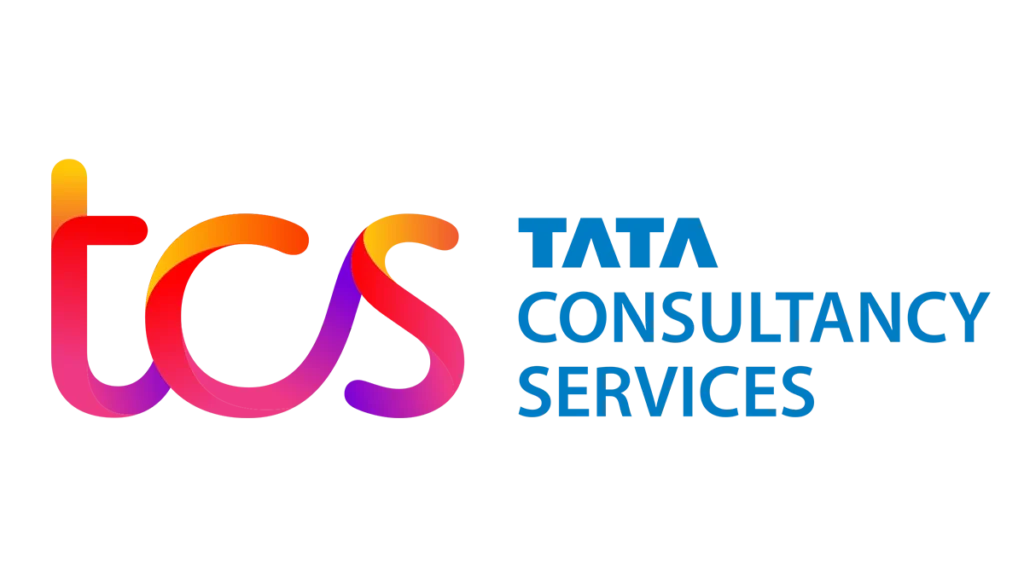

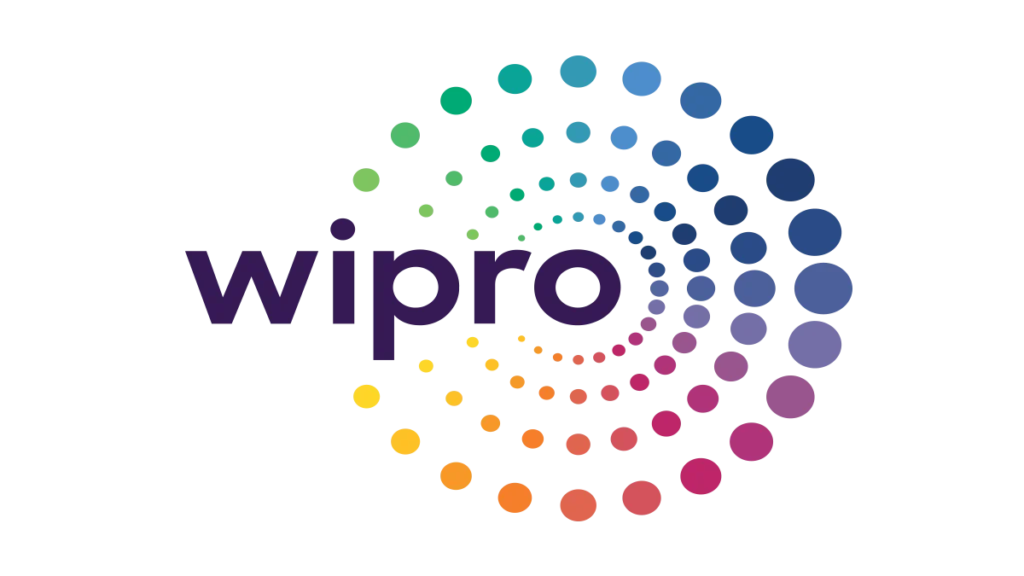
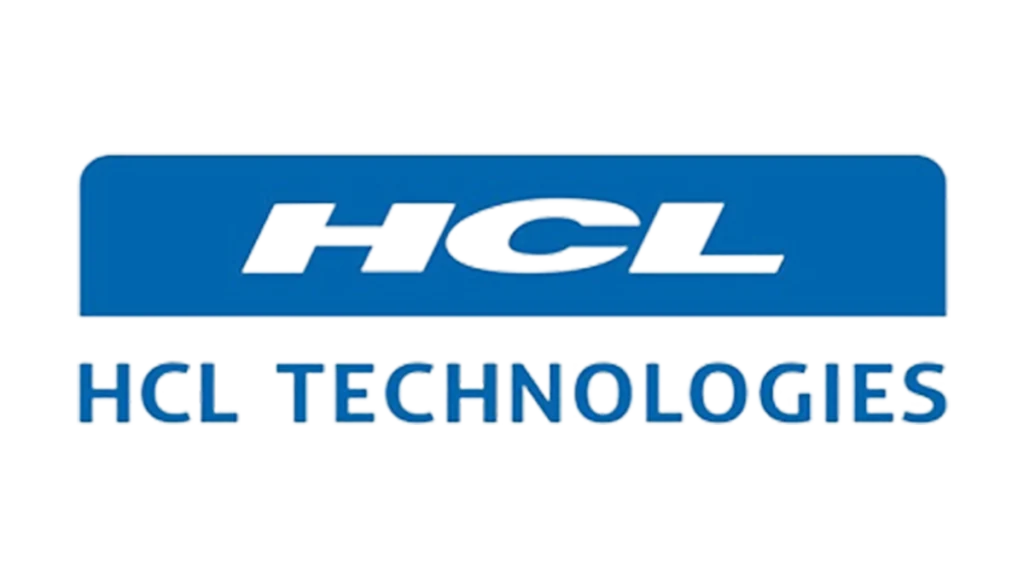
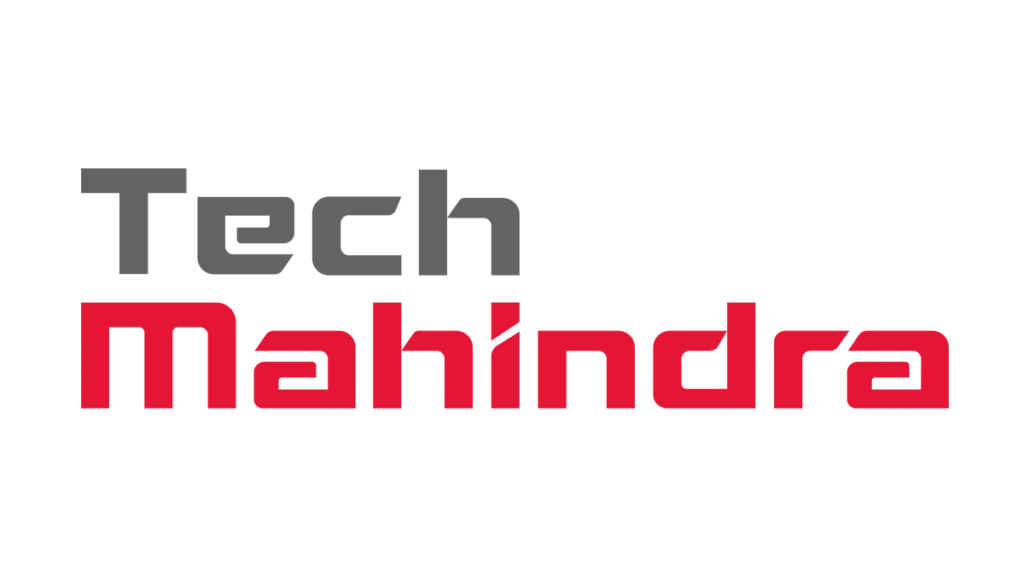
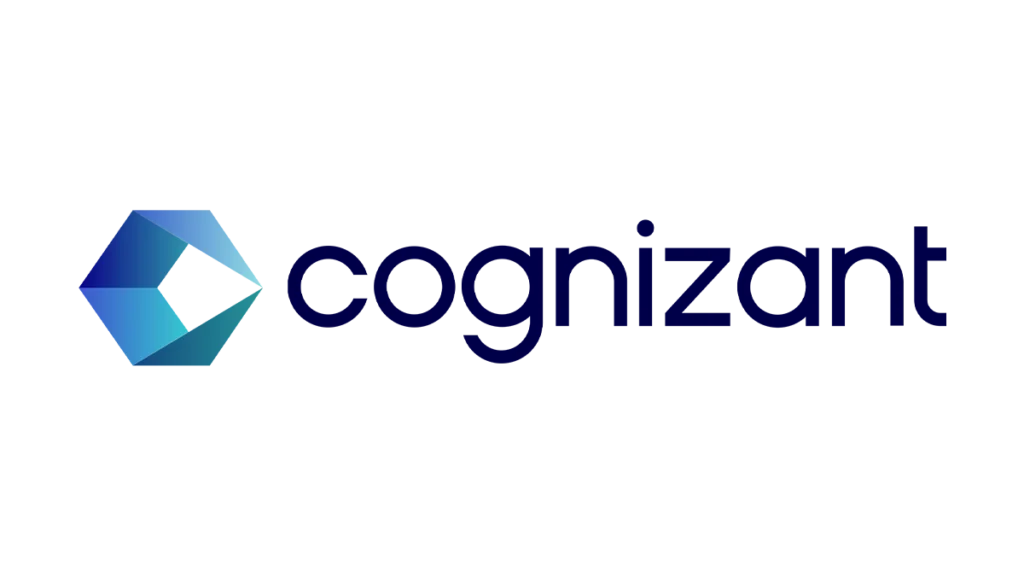









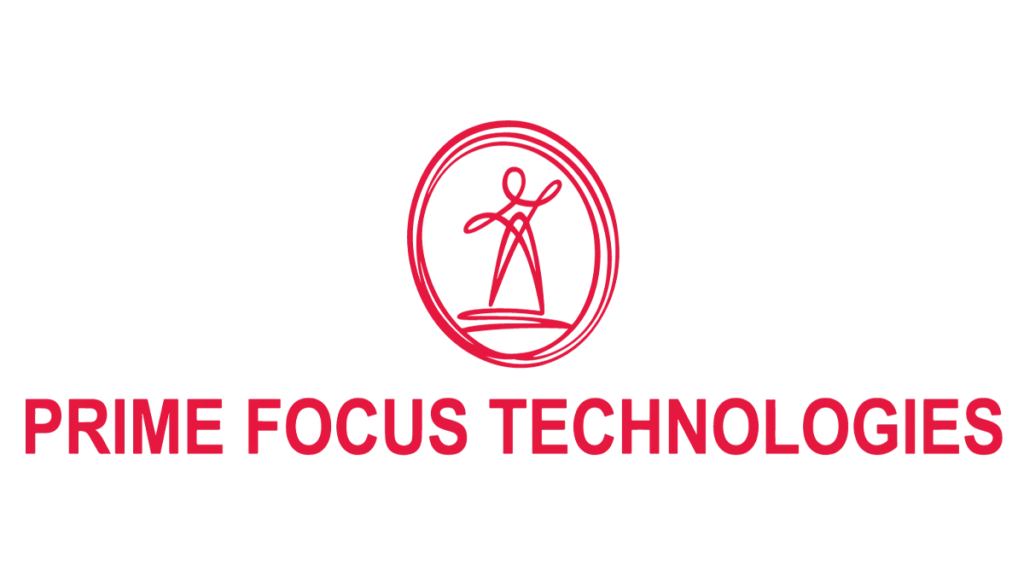


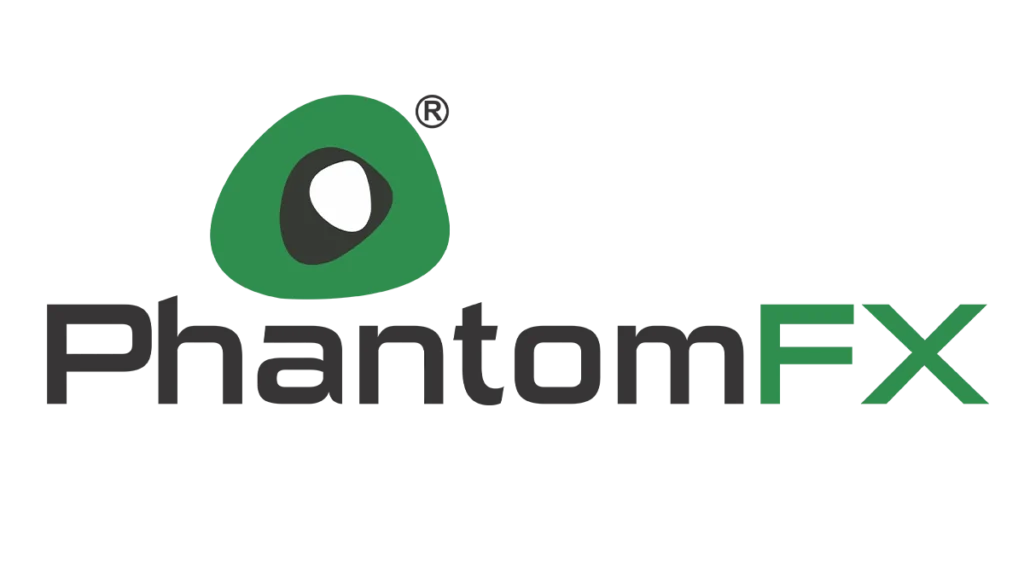

Testimonials From Our Students
Our alumni share stories of growth, transformation, and the lifelong impact of their journey with us.


